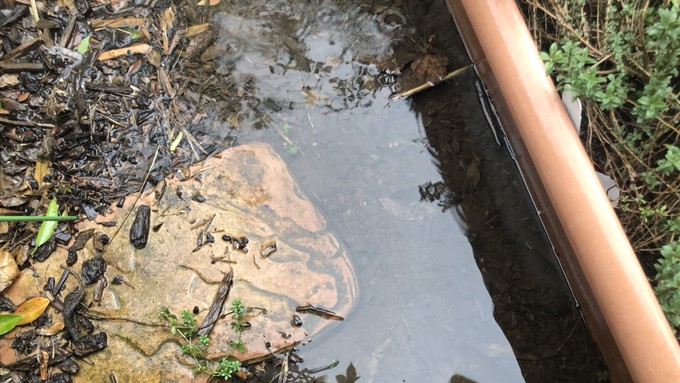
Sacramento's October-November rain total tracks very close to 2022

Rain, rain, rain; when is it coming our way? So far, our water year has been below average, but that doesn't mean we'll have a dry December. Kathy Morrison
So far, our current water year – which runs Oct. 1 to Sept. 30, 2024 – has been feeling kind of dry. But don’t panic about lack of rainfall; we were at almost exactly the same spot last December – and we remember how that water year turned out.
For much of Sacramento (especially us folks south of the American River), our recent showers have been a drizzle at best. According to the National Weather Service, Sacramento received only a trace of rain from the storm systems that passed through Northern California since Thanksgiving. A half inch or more had been predicted.
Sacramento’s November rain totaled only 0.36 inches – 1.3 inches below average. Of that total, most of it (0.21 inches) fell on one day (Nov. 18). That followed a below par October (0.6 inches).
Our 2023-24 water year, which started Oct. 1, hasn’t quite measured up to an inch – 0.96. That’s more than 1.5 inches below our 30-year average for those two months.
Here’s the surprise: The first two months of our 2022-23 water year totaled almost exactly the same – 0.95 inches. After a bone-dry October, all of that total fell in November. That may be why we remember last November as “wet.”
Or it could be because we had a very wet winter. Last December kicked off an unusually rainy season with 2.33 inches falling in the first five days. December 2022 ended with 7.79 inches – 4.36 inches above average.
That 2022-23 water year wound up as one of the wettest on record. Downtown Sacramento received 26.22 inches, more than 7 inches – 36.5% – above average.
As for this December, the weather service forecasts more possible showers coming soon – or not. “Chance rain showers” – 20 to 35% – is predicted for Saturday, Wednesday and Thursday. But those odds also mean chances are 65 to 80% we’ll stay dry.
Just keep your umbrella handy – and fingers crossed.
For more on Sacramento weather: https://www.weather.gov/sto/.
Comments
0 comments have been posted.Sacramento Digs Gardening to your inbox.
Food in My Back Yard Series
May 6: Maintain soil moisture with mulch for garden success
April 29: What's (already) wrong with my tomato plants?
April 22: Should you stock up on fertilizer? (Yes!)
April 15: Grow culinary herbs in containers
April 8: When to plant summer vegetables
April 1: Don't be fooled by these garden myths
March 25: Fertilizer tips: How to 'feed' your vegetables for healthy growth
March 18: Time to give vegetable seedlings some more space
March 11: Ways to win the fight against weeds
March 4: Potatoes from the garden
Feb. 25: Plant a fruit tree now -- for later
Feb. 18: How to squeeze more food into less space
Feb. 11: When to plant? Consider staggering your transplants
Feb. 4: Starting in seed starting
Sites We Like
Garden Checklist for week of May 11
Make the most of the lower temperatures early in the week. We’ll be back in the 80s by Thursday.
* Plant, plant, plant! It’s prime planting season in the Sacramento area. Time to set out those tomato transplants along with peppers and eggplants. Pinch off any flowers on new transplants to make them concentrate on establishing roots instead of setting premature fruit.
* Direct-seed melons, cucumbers, summer squash, corn, radishes, pumpkins and annual herbs such as basil.
* Harvest cabbage, lettuce, peas and green onions.
* In the flower garden, direct-seed sunflowers, cosmos, salvia, zinnias, marigolds, celosia and asters. (You also can transplant seedlings for many of the same flowers.)
* Plant dahlia tubers.
* Transplant petunias, marigolds and perennial flowers such as astilbe, columbine, coneflowers, coreopsis, dahlias, rudbeckia and verbena.
* Keep an eye out for slugs, snails, earwigs and aphids that want to dine on tender new growth.
* Feed summer bloomers with a balanced fertilizer.
* For continued bloom, cut off spent flowers on roses as well as other flowering plants.
* Add mulch to the garden to maintain moisture. Mulch also cuts down on weeds. But don’t let it mound around the stems or trunks of trees or shrubs. Leave about a 6-inch-to-1-foot circle to avoid crown rot or other problems.
* Remember to weed! Pull those nasties before they set seed.
* Water early in the day and keep seedlings evenly moist.